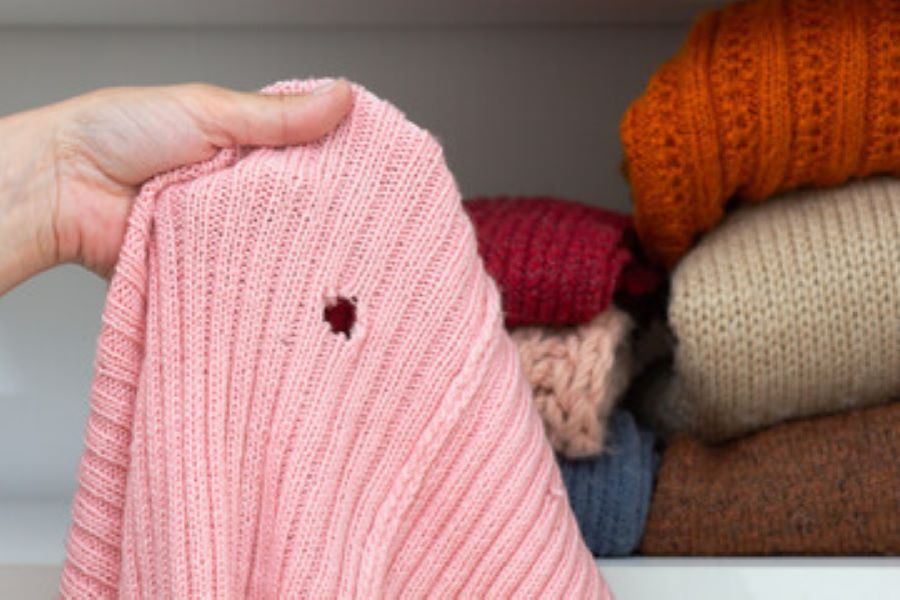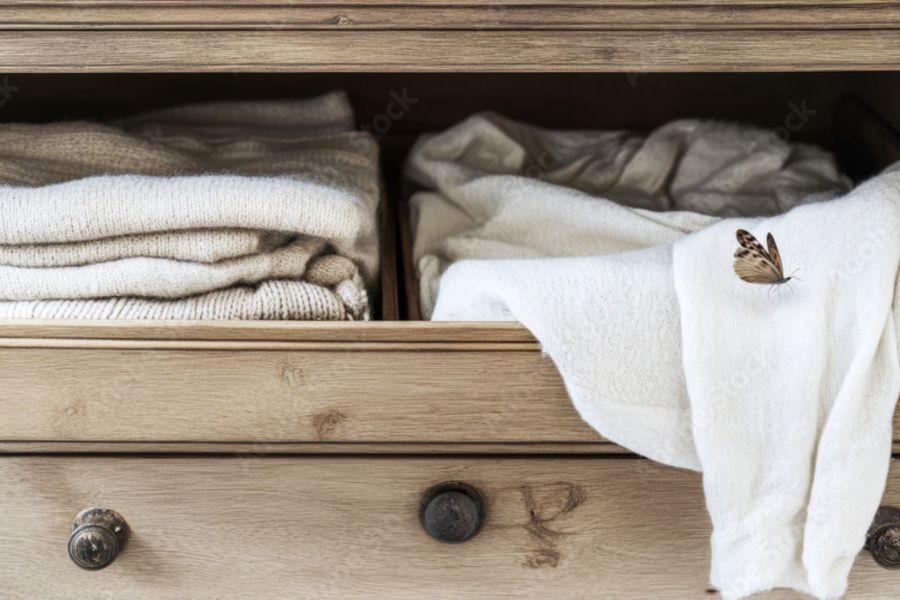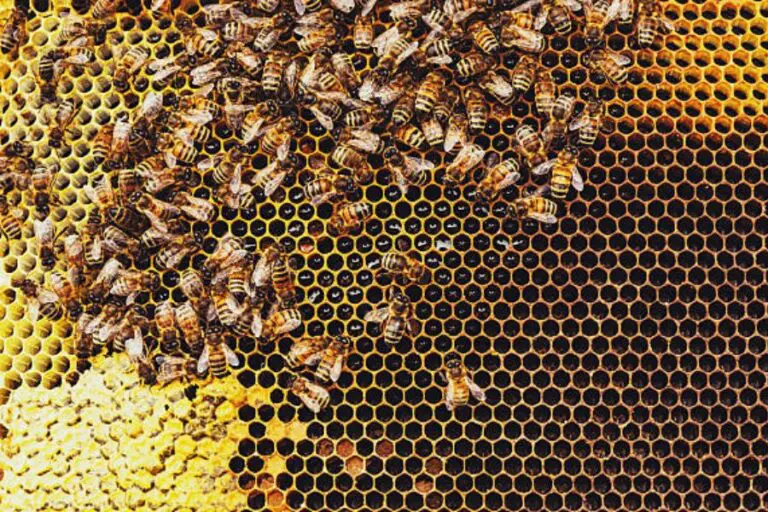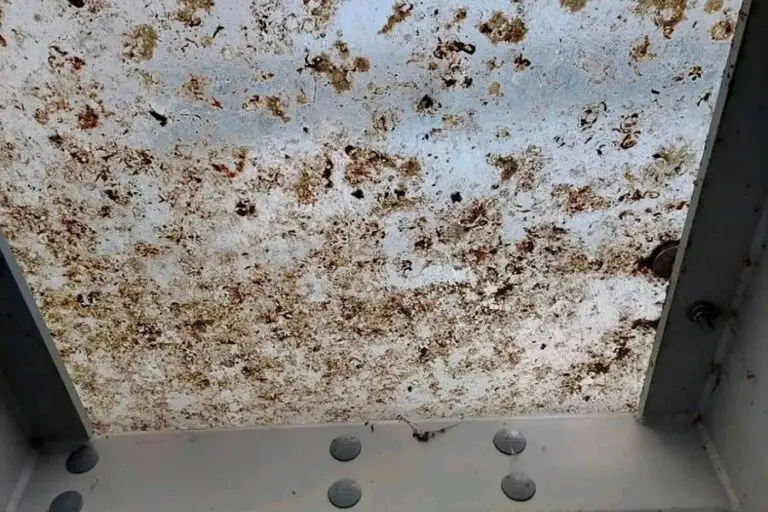Comprehensive Clothes Moth Control: Safeguarding Your Wardrobe from Infestation

Clothes moths are small, inconspicuous insects that can wreak havoc on your wardrobe. They are notorious for leaving behind damaged fabrics and holes in cherished garments, blankets, and upholstery. If you’ve ever dealt with a clothes moth infestation, you know how frustrating and costly it can be. This guide will cover everything you need to know about clothes moth control, including recognising the signs of an infestation, understanding their preferred fabrics, and exploring effective methods for prevention and elimination.
Signs of a Clothes Moth Infestation
Effective clothes moth control starts with understanding how to spot these pests early. Here are some tell-tale signs of a clothes moth infestation. Identifying these signs early on is crucial for successful clothes moth control. Swift action can prevent damage and help contain the infestation, giving you a sense of control over the situation.
Holes in Fabrics: The most common signs are small, irregular holes in clothing, blankets, and upholstery. Clothes moth larvae feed on animal-based fibres, damaging wool, silk, and fur items.
Larvae Casings: Clothes moth larvae leave silken tubes or casings where they’ve been feeding. These are often found in the corners of closets or hidden in folds of clothing.
Adult Moths: Seeing tiny, beige-coloured moths resting on walls, ceilings, or in the closet could indicate an infestation.
Droppings: Clothes moths leave behind tiny droppings near the infested area. These may look like small black specks and can blend in with dark fabrics.
Musty Odour: Clothes moths can leave behind a musty odour in the affected area or items, which can signal their presence.
Identifying these signs early on is crucial for successful clothes moth control. Swift action can prevent damage and help contain the infestation.
Are Clothes Moths Attracted to Certain Fabrics?
Yes, clothes moths are particularly attracted to natural fabrics rich in keratin, such as wool, fur, silk, and feathers. The larvae feed on this protein, which makes these materials particularly vulnerable to clothes moth damage. Items like cashmere sweaters, wool coats, and silk scarves are at high risk, and moths may also be drawn to blends that contain some natural fibres.
While clothes moths prefer animal-based fabrics, they can infest synthetic materials if they contain traces of natural fibres or are soiled with organic matter, such as sweat, food stains, or body oils. Regular clothes moth control, including cleanliness and storage techniques, is essential for protecting delicate items in your wardrobe.
Do Clothes Moths Survive in Cold Temperatures?
Clothes moths prefer warmer environments and struggle to survive in extreme cold. Using cold treatment is a practical clothes moth control strategy. Exposing infested items to freezing temperatures for at least 72 hours can kill clothes, moth larvae, and eggs. Placing clothing in the freezer is an effective alternative if you have clothing or fabric that can’t be washed or heated.
By incorporating cold storage or occasional freezing, you can limit the possibility of moths infesting your most precious woollens. Freezing is also a safe, chemical-free option for clothes moth control, making it ideal for delicate fabrics.
Specific Storage Techniques for Clothes Moth Control
Proper storage plays a significant role in controlling and preventing clothes moths. By following these specific storage techniques, you can take proactive steps to protect your items from moth infestations, giving you a sense of responsibility and control over your wardrobe.
Clean Before Storing: Always wash or dry clean clothing before storage. Even a small amount of food residue or body oils can attract clothes moths.
Use Airtight Containers: Store your seasonal items in airtight containers, vacuum-sealed bags, or storage bins with tight-fitting lids. This will prevent clothes moths from accessing the fabrics.
Natural Repellents: Use natural repellents like lavender sachets, cedar blocks, or herbal repellent sprays. These items emit scents that clothes moths dislike, making them a valuable tool for controlling them. Placing these repellents in your storage areas can help deter moths from infesting your fabrics. Regularly Inspect Storage Areas: Check your stored items for signs of moths every few months, especially if stored for long periods.
Reduce Clutter: Moths love undisturbed spaces, so keep storage areas tidy. Regularly rotate or rearrange items to prevent a hidden build-up of clothes moths.
These techniques prevent moth infestations and create an environment where clothes moths are less likely to thrive. Proper storage is essential to any adequate clothes moth control strategy.
Eliminating Clothes Moths Without Pesticides
For those who prefer natural methods, there are several ways to eliminate clothes moths without using chemicals. These methods have been proven effective and can give you the confidence that you’re handling the infestation safely and eco-friendly.
Freezing: As mentioned, freezing kills clothes moth larvae and eggs. It’s a gentle and effective method for delicate fabrics.
Heat Treatment: Exposure to high temperatures, such as using a hot dryer or steam cleaning, can effectively control clothes moths. Ensure fabrics are heat-safe before using this method.
Vacuuming: Regular vacuuming of carpets, rugs, and closets can remove moth eggs and larvae. This is particularly important in areas where woollen or silk items are stored.
Sticky Traps: Pheromone traps attract male clothes moths, disrupting their reproductive cycle and reducing the population over time.
Combining these natural clothes moth control methods, you can create a comprehensive approach to handling an infestation without pesticides. Regular cleaning, vacuuming, and monitoring will help keep moth populations in check.

Differences Between Clothes Moths and Pantry Moths
While clothes moths and pantry moths share the same pest family, they target different materials and have distinct behaviours. Here are some key differences:
Habitat: Clothes moths prefer closets, drawers, and other areas with natural fibres, while pantry moths are found in kitchen cupboards and target dry foods.
Diet: Clothes moths feed on keratin-rich fibres like wool and silk, while pantry moths consume grains, flour, nuts, and dried fruit.
Damage: Clothes moths create holes in fabrics, while pantry moths leave behind webs and cocoons in food packaging.
Understanding these differences is essential for targeted clothes moth control. The best results will be obtained by using the appropriate traps and treatments for each type.
Can Clothes Moths Infest Synthetic Fabrics?
Although clothes moths primarily target natural fibres, synthetic fabrics are not immune to an infestation. Moths may infest synthetic blends if they contain natural fibres, and they may also be attracted to synthetic items if they are dirty or have food stains.
Clothes moth control measures should still be applied to synthetic fabrics, especially if stored with natural fibres. Ensuring cleanliness and proper storage for all fabrics can prevent infestations from spreading.
What Kills Clothes Moths Instantly?
If you’re dealing with an active infestation, here are some methods that can kill clothes moths on contact:
Heat: High temperatures, such as those in a hot dryer or steam cleaning, kill clothes moths at all stages of life.
Freezing: Placing items in the freezer for several days will kill larvae and eggs, effectively halting the infestation.
Vacuuming: Physically removing adult moths, larvae, and eggs through vacuuming can help eliminate them from your home. Always dispose of the vacuum bag immediately afterwards.
These immediate clothes moth control methods help stop the infestation in its tracks, allowing you to begin implementing preventive measures for long-term protection.
Can Clothes Moths Survive the Washing Machine?
Clothes moths cannot survive the washing machine if washed in hot water (at least 120°F or 50°C) and detergent. Washing infested items thoroughly can eliminate most clothes moths, especially in combination with drying at high heat.
After washing, inspecting the machine for any remaining larvae or eggs is wise to prevent their potential spread to other garments. Integrating this method into your regular laundry routine is an effective clothes moth control measure that ensures any larvae or eggs are regularly eliminated from your wardrobe.
Final Thoughts on Clothes Moth Control
Effective clothes moth control requires a blend of prevention, detection, and treatment strategies. By understanding their habits and preferences, you can proactively safeguard your fabrics and prevent future infestations. From the fabrics they prefer to practical storage methods and chemical-free treatment options, this guide equips you with the essential knowledge to keep your wardrobe safe.
Whether you’re dealing with an existing infestation or want to be prepared, these clothes moth control techniques can help you manage and prevent damage from these destructive pests. With regular vigilance and the right preventive steps, you can protect your wardrobe and home from clothes moths, ensuring your cherished fabrics remain pristine.





